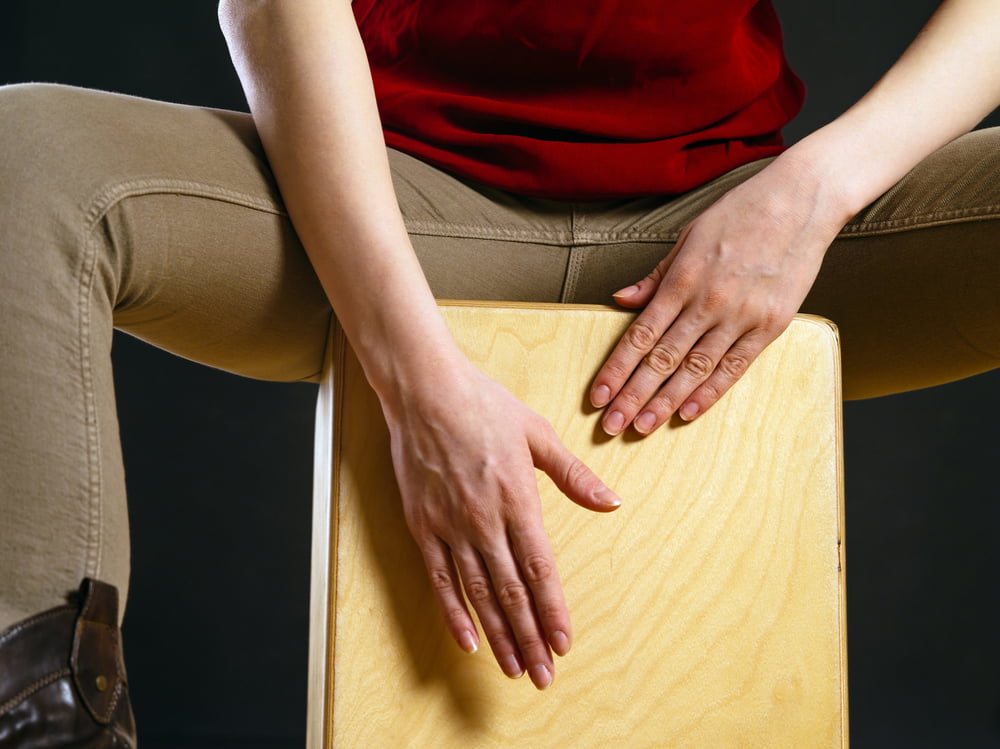7. Playing techniques
One of the great advantages of the cajón in comparison to other percussion instruments is that the playing technique is relatively easy to learn, which allows even beginners to achieve a good sound after quite a short time.
You sit on the rear portion of the seat, which gives both your hands easy access to the outer edges of the upper playing area. The feet should be placed to the left and right a little bit in fron of the cajón, so that you can tilt the cajón backwards a bit. This has the benefit of allowing you to straighten your back and to reach the playing surface more easily. Though it is frequently practiced otherwise, only the top third of the cajón's playing surface should actually be played.
The three most important strikes are the bass tone, the high tone and the slap tone. These three tones allow you to play the rhythms in the next chapter.
To coax a warm and voluminous bass tone from your cajón, slap the playing surface with your flat hand by simply letting the weight of your arm do what it wants. Your carpus, the part of the hand just above the wrist, should be at about the height of the cajón's upper edge. So as not to muffle the bass after striking, let you hand "bounce" off the surface immediately.
The slap tone is played from the wrist by striking the upper part of the playing surface with the your palm at the top edge of the cajón and the relaxed extended fingers striking the playing surface. As in the bass tone, allow them to "bounce" back immediately. The sound should be significantly different from the bass tone. Depending on your cajón, you might have to experiment a little to find the best possible position.
The high slap tone, played with the finger tips at the top of the playing surface, should produce significantly less volume.
Playing techniques from other percussion instruments, such as conga, bongo or doumbek can be used for special effects or drum rolls.



